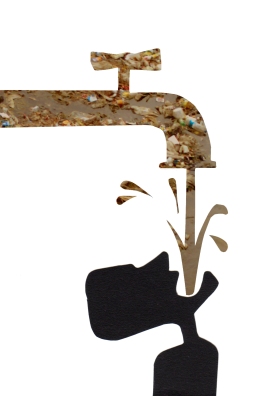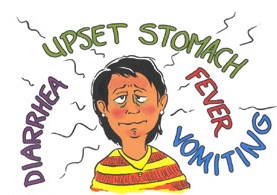 Sure, you might have finished the tedious process of flood restoration and cleanup, but after one day of doing so, you might be suffering from a painful, and debilitating disease. You may have gotten it while in the process of cleaning up, especially if you refused to wear protective gear while doing so. You may have dried and disinfected the floors, walls, pieces of furniture, attic, prevented mold growth in susceptible areas and cleared out the basement but you might have made one fatal mistake: you did not look out for your safety and well-being. That said, here are some of the flood-borne diseases that you may experience if you disregard your welfare during the ordeal:
Sure, you might have finished the tedious process of flood restoration and cleanup, but after one day of doing so, you might be suffering from a painful, and debilitating disease. You may have gotten it while in the process of cleaning up, especially if you refused to wear protective gear while doing so. You may have dried and disinfected the floors, walls, pieces of furniture, attic, prevented mold growth in susceptible areas and cleared out the basement but you might have made one fatal mistake: you did not look out for your safety and well-being. That said, here are some of the flood-borne diseases that you may experience if you disregard your welfare during the ordeal:
Typhoid Fever
One of the reasons why you need to protect yourself during flood restoration is because of Typhoid Fever. This can be transmitted through person-to-person interaction and through food and water consumption. Primarily common in third world countries, it is potentially debilitating and is caused by certain strains of Salmonella paratyphoid, namely: S. Paratyphi, S. Schottmuelleri, and S. Hirschfeldii. In the event of floods, it can be communicated be transmitted through:
- Contaminated and unclean drinking water. This is the reason why you need to be able to avail clean drinking water before the flood hits your area.
- Consumption of contaminated food. Food that had been in contact with flood water, including tin cans and airtight food packs must not be eaten to reduce the risk of contacting Typhoid fever and other diseases.
- Unhygienic conditions. Even if the food you are eating is clean and safe from the strains, your hands might be infested with it. It is important to take baths with antibacterial soap during floods.
Cholera
 This disease is another reason why personal hygiene during and after flood restoration is necessary. Basically an acute intestinal infection, cholera is caused mainly by bacterium Vibrio cholerae, which thrives in unclean water and contaminated food. Common symptoms include watery stools and vomiting which can lead to extreme dehydration and shock – if electrolytes and fluids are not replenished, it can cause death in a matter of hours. Severe cases of this disease requires antibiotics, hospital confinement and intravenous and oral rehydration. Currently, it is a big disease in India, recording over 25,000 cases per year. It also occurs in the United States.
This disease is another reason why personal hygiene during and after flood restoration is necessary. Basically an acute intestinal infection, cholera is caused mainly by bacterium Vibrio cholerae, which thrives in unclean water and contaminated food. Common symptoms include watery stools and vomiting which can lead to extreme dehydration and shock – if electrolytes and fluids are not replenished, it can cause death in a matter of hours. Severe cases of this disease requires antibiotics, hospital confinement and intravenous and oral rehydration. Currently, it is a big disease in India, recording over 25,000 cases per year. It also occurs in the United States.
Leptospirosis
A lesser known but deadly disease, Leptospirosis is a bacterial infection caused by bacterium Leptospira. This disease is taken from contaminated animal urine, particularly rats and other large rodents. Humans can become infected once they come into contact with the urine, whether by ingestion or through open wounds, the eyes, nose and mouth, which is why wading in flood waters is pretty dangerous. Severe cases can lead to meningitis, kidney problems and even liver failure.
In order to prevent being infected by the above mentioned diseases, simply wear protective gear when wading in flood waters. Also remember that proper hygiene is vital during this period, given that avoiding it will certainly be a life and death situation. Only consume purified drinking water and uncontaminated food.